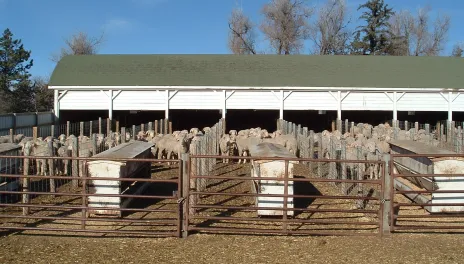Tradition of Sheep Industry Innovation Continues at Hettinger REC
While sheep have not always been the focus of livestock research at NDSU’s Hettinger Research Extension Center (HREC), the center’s commitment to providing research that helps sheep producers be more efficient and profitable has been the focus since 1944, when the HREC first acquired sheep.
The HREC was established in 1909 to evaluate dairy cattle production systems, which were the basis of livestock production during the settlement of southwestern North Dakota. By the 1940s, producer attention shifted, and sheep were introduced to the facility.
“Since that time, the HREC has worked with sheep breeders, industry partners and stakeholders, and university researchers to target research that is valuable to sheep producers from across the nation,” says HREC director Chris Schauer.
The Dakota Ram Test, a long-standing performance test hosted by the HREC, allows sheep producers to bring their rams to the center to assess their performance for use in breeding programs. The test is primarily designed for Rambouillet and Columbia breeds of sheep, and attracts breeders from North Dakota, South Dakota, Wyoming, Montana and Colorado.
In addition to the Dakota Ram Test, the center has long sought to provide cutting-edge research that directly impacts the health, performance and profitability of sheep.
“Some of our current research aims to study the genetic predictability of structural soundness in sheep,” says Schauer. “Our goal is to identify genetic markers that may influence why some sheep lose their structural soundness as they near maturity.”
To aid in their future research, the HREC broke ground on a new small ruminant feedlot in May 2023. The feedlot and other renovations to the HREC livestock units will give NDSU and the HREC state-of-the-art facilities for future research in genetics, feed efficiency and greenhouse gas emissions. Completion is expected in the spring of 2024.
FOR MORE INFORMATION
Chris Schauer, 701-774-4315, Christopher.schauer@ndsu.edu
